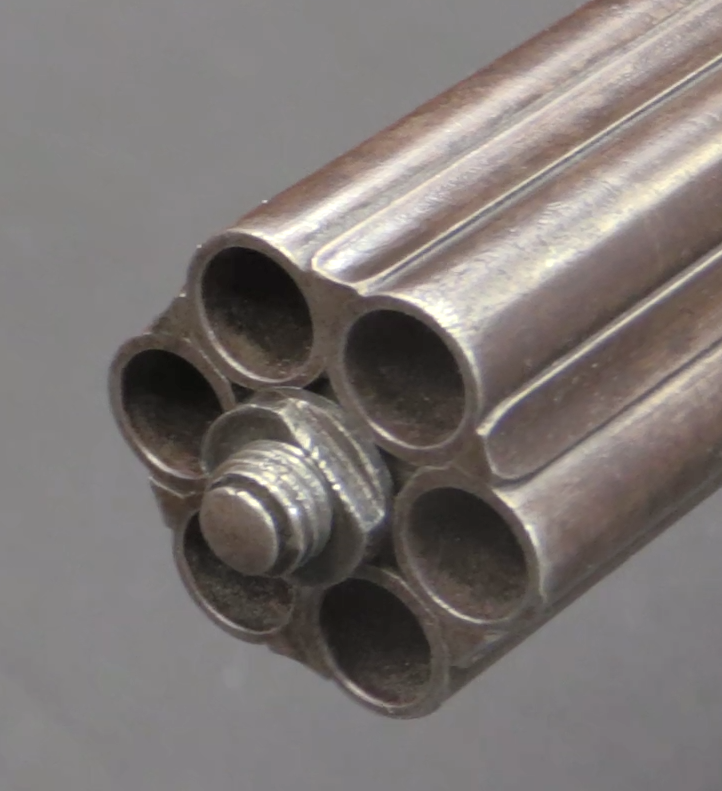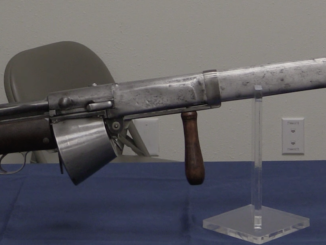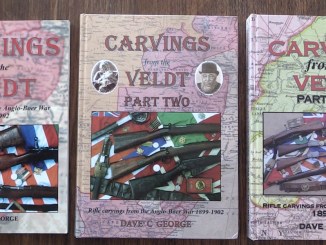One of the the flamethrower design styles to come out of experimentation late in World War One was the toroid type, with a donut-shaped fuel tank and a central spherical pressure bottle. The British continued development on this type of weapon between the wars, and used it in World War Two. While the early models used a hydrogen spark ignition system, this was replaced in 1942 by a cartridge flare system like the US and Japanese models.
The tank on this example is a fiberglass one, and very lightweight. This was introduced after World War Two, and this one is an experimental model.
Armament Research Services (ARES) is a specialist technical intelligence consultancy, offering expertise and analysis to a range of government and non-government entities in the arms and munitions field. For detailed photos of the guns in this video, don’t miss the ARES companion blog post.




Just one teeny tiny criticism; in British English, buoy rhymes with toy. Don’t ask me why. If we started discussing the inconsistencies of the English language we’d be here till the next millennium . . .
“buoy rhymes with toy”
This reminded me about: http://ultrafactsblog.com/post/151494334086/ultrafacts-dearest-creature-in-creation
Obviously I even don’t try to spell it
Anyway, I stop expecting any logic after trying to decode early British coins.
1 penny is smallest coin
12 of that coins equal 1 shilling
Depending on source
20 shillings equal 1 sovereign
or
21 shillings equal 1 guinea
While I would be able to understand 3-degree system of equal base (that is for example 12 smallcoin = 1 mediumcoin, 12 mediumcoin = 1 bigcoin) then unequal division make no sense to me.
A penny is physically larger than a shilling, sovereign, or guinea of course, to add to the confusion. The farthing- a quarter penny- was the smallest denomination typically found in English commerce, but quarter farthings- 1/3480th of a pound- were coined and current before 1971.
Ad it doesn’t have to make sense to foreigners, it’s not for you! 😉
Also, it’s 12 copper coins = 1 silver coin , 12 silver coins = 1 gold coin. Which still fails, because fractions and multiples of each denomination were made.
The farthing was the smallest denomination of coin full stop. It stopped being legal tender in 1960.
Also it was 12 pennies to 1 shilling, 20 shillings to one pound; with a Guinea being a gold coin worth 1 pond 1 shilling.
Guineas were used in some transactions; like horse trading and I am sure auctions, long after they stopped being common coins.
If you add place names into the mix it gets even worse.
Vale of Belvoir anyone?
Nice looking valley. Seems pretty basic.
Fuel tank of similar shape was used in German WW1 WEX flamethrower:
http://qsy-complains-a-lot.tumblr.com/post/151189826079/wechselapparat-m1917-wex-flamethrower-designed
However during second war German forces used Flammenwerfer 35 with barrel-shaped fuel tank.
The shoulder straps look like SA80 rifle slings!!
This is the lifebuoy the flamethrower was named after. Lifebuoys themselves being named after the floating but tethered buoys that marked sea lanes. https://www.vectorstock.com/royalty-free-vector/life-buoy-vector-271083